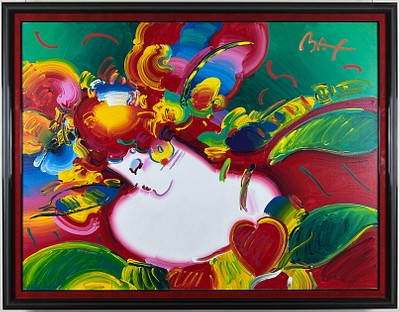Ed Ruscha "A PARTICULAR TYPE OF HEAVEN" Offset Lithograph
Lot 715
Categories
Estimate:
$240 - $480
Absentee vs Live bid
Two ways to bid:
- Leave a max absentee bid and the platform will bid on your behalf up to your maximum bid during the live auction.
- Bid live during the auction and your bids will be submitted real-time to the auctioneer.
Bid Increments
| Price | Bid Increment |
|---|---|
| $0 | $5 |
| $100 | $10 |
| $200 | $20 |
| $1,000 | $50 |
| $5,000 | $100 |
| $10,000 | $200 |
About Auction
By Scottsdale Art Exchange
Jul 29, 2023
Set Reminder
2023-07-29 12:00:00
2023-07-29 12:00:00
America/New_York
Bidsquare
Bidsquare : Our Annual Midsummers Day Auction
https://www.bidsquare.com/auctions/scottsdale-art-exchange/our-annual-midsummers-day-auction-13196
This auction will feature 900 amazing items. The Auction will include 300 items for our fine art gallery and over 600 items from our consignment partners. Scottsdale Art Exchange sue@firerockfineart.com
This auction will feature 900 amazing items. The Auction will include 300 items for our fine art gallery and over 600 items from our consignment partners. Scottsdale Art Exchange sue@firerockfineart.com
- Lot Description
Ed Ruscha is an American artist known for his contributions to the Pop Art movement and his exploration of language, typography, and the American landscape. Here are some key points about Ed Ruscha: 1. Early Life and Education: Ed Ruscha was born on December 16, 1937, in Omaha, Nebraska. He grew up in Oklahoma City and studied at the Chouinard Art Institute (now known as the California Institute of the Arts) in Los Angeles, California. 2. Pop Art and Conceptual Art: Ruscha emerged as an influential figure in the Pop Art movement of the 1960s. He drew inspiration from popular culture, advertising, and the visual aesthetics of the American West. Ruscha's artworks often featured simple, bold, and graphic representations of words, phrases, and symbols. 3. Language and Typography: Ruscha's use of text in his artworks became a defining characteristic of his work. He explored the visual and conceptual aspects of language, often presenting single words or short phrases as visual elements. His use of typography is notable for its clean and precise style. 4. Depiction of the American Landscape: Ruscha is known for his fascination with the American landscape and its vastness. He often depicted iconic elements of the American West, such as gas stations, highways, and parking lots. His paintings and prints capture a sense of isolation and detachment, reflecting the influence of the urban environment on the American psyche. 5. Mediums and Techniques: Ruscha is known for working across various mediums, including painting, drawing, printmaking, photography, and artist books. He experimented with different materials and techniques, including screen printing, lithography, and the use of unconventional materials like gunpowder and vegetable dyes. 6. Book Projects: Ruscha has produced a significant body of work in the form of artist books. These books often feature his text-based artworks and explore themes of language, communication, and the concept of the book as an art object. Some of his notable book projects include "Twentysix Gasoline Stations" (1963) and "Every Building on the Sunset Strip" (1966). 7. Recognition and Legacy: Ed Ruscha's work has been exhibited and collected by major museums and institutions worldwide. He has received numerous awards and honors throughout his career, including the Golden Lion at the Venice Biennale in 2005. Ruscha's contributions to art continue to influence and inspire contemporary artists, particularly those interested in the intersection of language, visual art, and the American landscape. Ed Ruscha's art challenges traditional notions of representation and embraces the visual power of language. His exploration of text, typography, and the American landscape has made a lasting impact on the art world and solidified his place as a significant figure in contemporary art.
Measures 21.75 x 33.Good condition. No rips, tears, creases.Condition
- Payment & Auction Policies
-
Available payment options
-
-
- Buyer's Premium



 EUR
EUR CAD
CAD AUD
AUD GBP
GBP MXN
MXN HKD
HKD CNY
CNY MYR
MYR SEK
SEK SGD
SGD CHF
CHF THB
THB



















